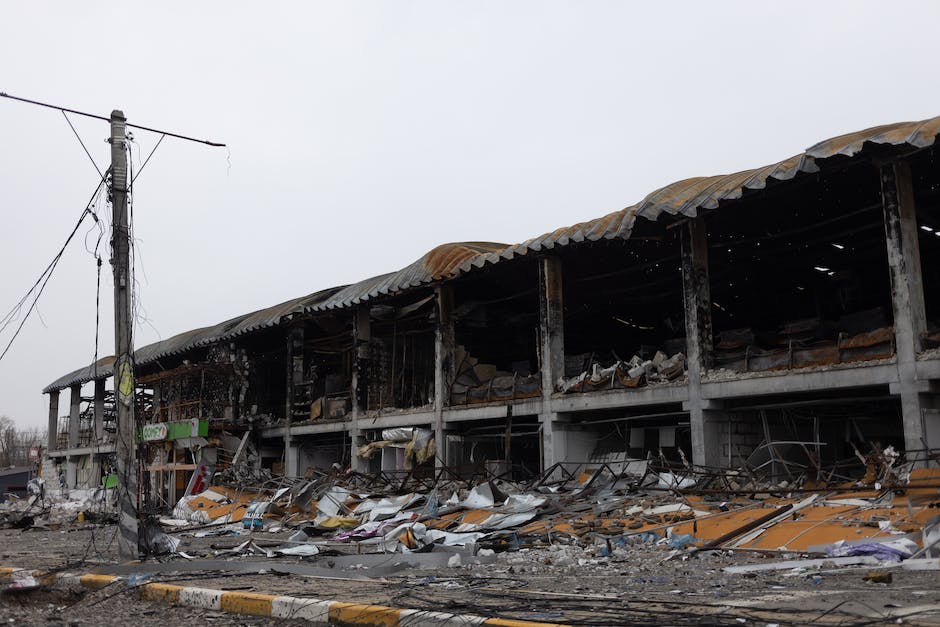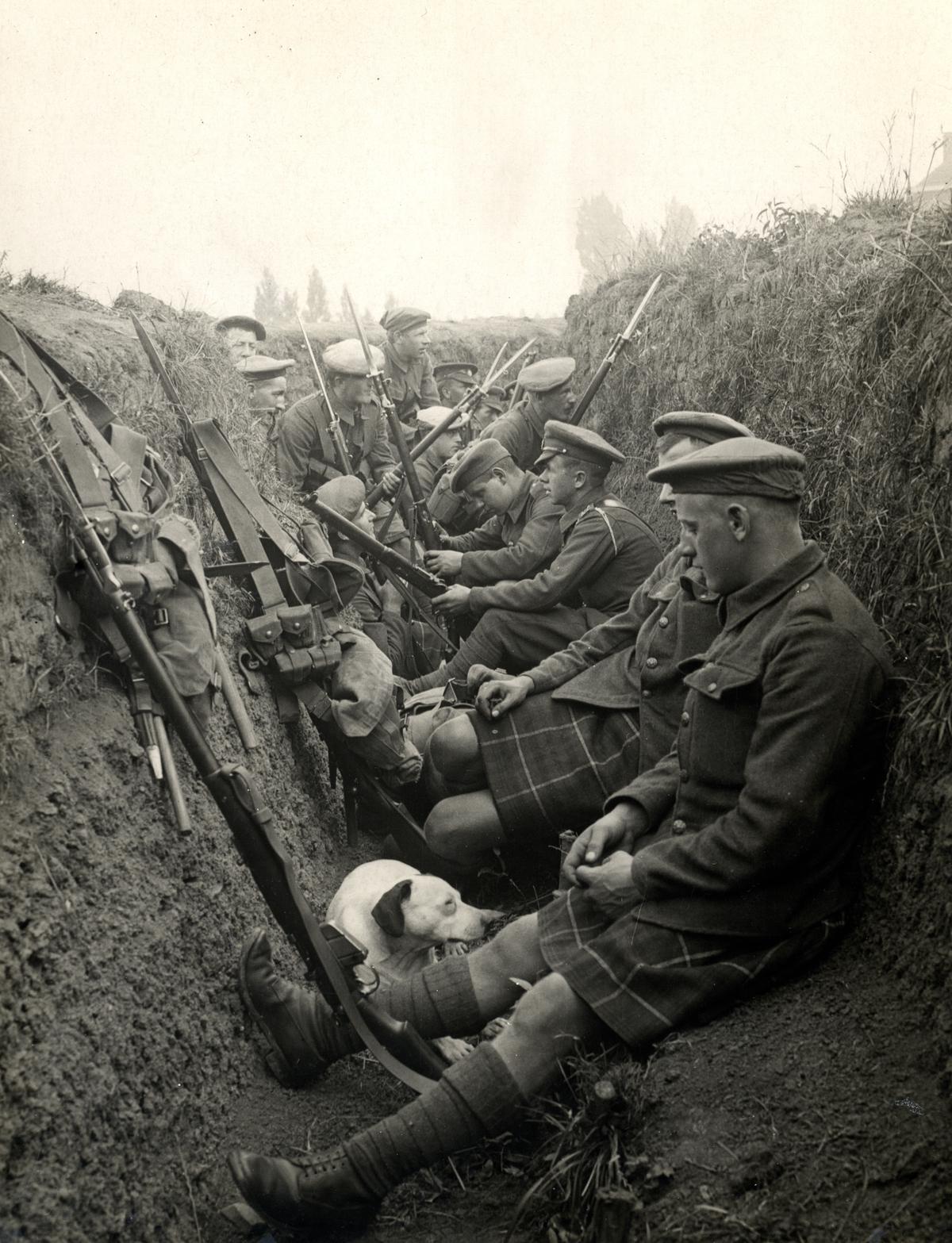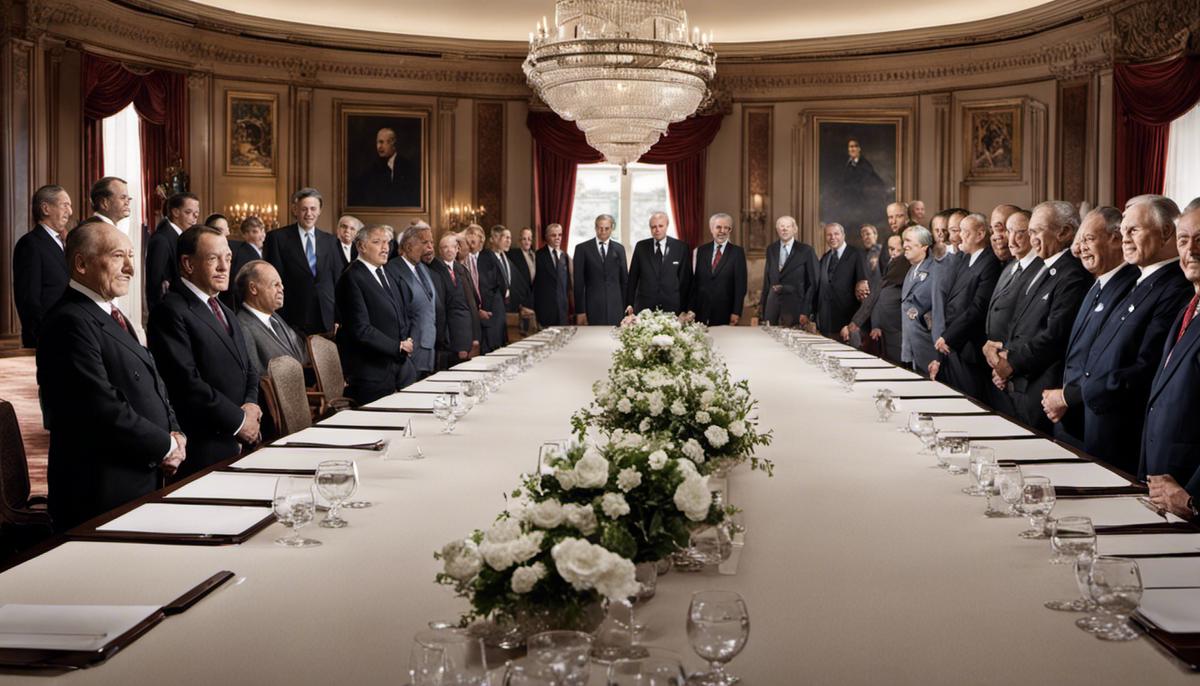As we stand on the precipice of the 21st Century, looking back on the dramatic course of events that have shaped our world, there is no denying the profound impact World War I had not only on the nations involved, but also on the global landscape. The early 20th Century was characterized by fraught international relationships, intricate alliances, and contentious rivalries – elements that played significant roles in steering the globe towards the Great War. From the power dynamics at play among the world’s mighty empires, to the fateful assassination of Archduke Franz Ferdinand, every event added a link to the chain that would ultimately result in the outbreak of one of the most devastating conflicts in human history. This contemplation will aim to decode the perplexing narratives of power, treachery, and animosity, unearthing the cumulative sequence of events that led to World War I.
Table of Contents
The Power Pragmatics in the Early 20th Century
Global Dynamics in the Early 20th Century and the Outbreak of War: An Analytic Examination
The early 20th century, a period marked by numerous socio-political upheavals and changes, carries a profound global impact, particularly with regard to the catalyzation of war. Understanding the distinct influences that engendered conflict during this time revolves not only around observing explicit battles and confrontations but delving deeper into the overarching zeitgeist, a complex interplay of socio-political dynamics, economic interests, and international relations.
Shaping an era ripe for conflict was the competing imperialistic ambitions of the world’s major powers. Ebbing away from traditional expansionist motives, utilitarian aims promoting economic, political, and social control surfaced. Britain and France, the powerhouses of imperialism, attempted to cling to their influential global footholds, leading to an escalation of competition with emerging powers such as Germany, Russia, and Japan. This intense rivalry set the stage for geopolitical tensions, eventually manifesting into the catastrophic warfare witnessed throughout the 20th century.
Also playing a significant role were divergent ideologies, enabling differing perceptions of the world, thus fostering inherent biases and misunderstandings. Democracy, socialism, and fascism vied for dominance, creating volatile political landscapes prone to conflict. For example, communism’s advocates battled against capitalist democracies, further complicating international relations through ideological polarization.
Of equal importance, the Industrial Revolution’s aftermath dictated the rhythm of the impending warfare. Rapid advancements in technology gave rise to new weapons, faster communication, and facilitated a strategic shift from conventional warfare to mechanized combat. Consequently, this technological toolset amplified the scale and extent of war, in turn influencing the magnitude of geopolitical strategy and facilitating longer, more devastating conflicts.
Accompanying this intricate tapestry is the fraught issue of international alliances, systems set up to maintain global equilibrium but, paradoxically, leading to a cascade of involvements once a single skirmish ignited. The intent behind these alliances was to deter aggressors and maintain peace. However, the domino effect following the assassination of Archduke Franz Ferdinand of Austria-Hungary in 1914 belied the precarious balance these alliances held, triggering an unprecedented outbreak of war.
Moreover, the galvanizing spirit of nationalism and the drawing of arbitrary national boundaries, particularly in regions such as the Balkans, incited ethnic tensions and stirred discontent. With different ethnic groups scrambling for self-determination, the accumulating pressures inevitably exploded, erupting into full-scale war.
This exploration into the factors manipulating global dynamics during the early 20th century elucidates the interconnected balance of socio-political elements that precipitated war. Through this framework, a deeper understanding of the birth of warfare in this era can be achieved, providing a valuable contextual lens for viewing global events and the consequences of international relations.

The Assassination of Archduke Franz Ferdinand
A Catalyst in History – Archduke’s Assassination and its Profound Impact on World War I
Splintering the equilibrium of power that had delicately held together, the shooting of Archduke Franz Ferdinand on June 28, 1914, served as a domino effect, fueled by a volatile blend of nationalism, militarism, and secret alliances. The assassination, executed by Serbian nationalist, Gavrilo Princip, became the flashpoint that ignited a series of international crises, flicking the first domino in the cascade towards World War I.
The assassination occurred in a European climate of escalating tensions, with the specter of war casting a shadow across the continent. The gravity of this event resided in its ability to both reflect and stimulate the prevailing antagonistic climate. This primarily happened via two mechanisms, the violation of international law and the activation of intricate alliance systems.
Countries such as Britain were vehemently outraged following the killing, not only due to the breach in diplomatic norms, but also due to the violation of international law. Respect for sovereignty and diplomatic immunity are foundational tenets of diplomatic relations. The assassination shattered these principles and galvanized an already tense international community.
Furthermore, the assassination set off a chain of events that drew Europe’s largest powers into war. Austria-Hungary’s decision to punish Serbia activated the myriad secret alliances woven across the European landscape. Keen to cement its control over the Balkans and fearful of the domino effect on its multi-ethnic empire, Austria-Hungary, backed by Germany (Central Powers), issued an ultimatum to Serbia. Russia, committed to its Slavic brethren in Serbia, went into partial mobilization following Serbia’s refusal to fully comply with the ultimatum. France and Britain were indirectly pulled in due to their alliances, the Triple Entente, with Russia. The network of alliances was so interlaced, that by the time Austria-Hungary officially declared war on Serbia on July 28, 1914, practically all major European countries were one way or another involved.
These events culminated in the creation of the Western and Eastern Fronts. The Western Front, a 400-plus mile stretch of land weaving through Belgium and Northeastern France, resulted from the German army’s implementation of the Schlieffen Plan. Meanwhile, the Eastern Front, shaped by the battles between the Central Powers and Eastern European Allies, was equally tethered to the escalating aftermath of the Archduke’s assassination.
The Archduke’s assassination, therefore, was the spark that lit the fuse of a powder keg of geopolitical pressures, complex alliance structures, and burgeoning nationalistic tensions. As a catalyst, it accelerated the shifting dynamic towards an otherwise inevitable conflict, carving World War I into the annals of history through both direct and indirect means.

The Escalation and Mobilization of Forces
In the complex matrix of factors explored in the preceding discussion, the ascendant role of militarization must also be seized upon. The latter half of the 19th century witnessed an unprecedented accumulation of weapon technologies and enhancement in transportation methods, as driven by the Industrial Revolution. This tense concoction of burgeoning industrial strengths and enhanced military capabilities further rattled the precarious balance of power in Europe, expediting the turn towards World War I.
Additionally, the larger bandwidth of global interconnectivity and emerging geopolitical tensions enlarged the chessboard of diplomacy and covert intelligence gatherings. Precisely structured bureaucratic systems were charged with managing intercontinental cables and countries’ diplomatic dispatches. This birthed a form of cold war, where states silently competed for intelligence superiority and the upper hand in covert warfare. Amid this quiet tumult, it was the Serbian clandestine military society, the Black Hand, that triggered the first domino in the chain of events leading to actual war.
In Sarajevo, on 28th June 1914, Gavrilo Princip from the Black Hand assassinated Archduke Franz Ferdinand, the heir to the Austro-Hungarian throne. Due to the ensuing violation of international law, Austria-Hungary issued an ultimatum to Serbia. The latter’s noncompliance escalated the situation to where Austria declared war against Serbia. Thus commenced military machinations and troop mobilization, which evolved into a potent tapestry of destruction.
Escalation then gained momentum through the hitherto dormant international alliances. The activation of diplomatic telegrams and the military mobilization process evolved from a regional entanglement of Austrian locales to continental Europe. Germany, with its interests aligned with Austria-Hungary and in the spirit of its secret alliance, declared war on Russia. France, bound by treaty to Russia, was pulled into the combat as well. Additionally, Germany’s invasion of Belgium violated the latter’s neutrality and triggered Britain’s intervention.
These intricate and synchronized cases of military mobilization illustrate the efficiency of the then modern bureaucratic systems and infrastructures in escalating a localized tableau of conflict to a full-blown continental warfare theater.
The formation of the Western and Eastern Fronts, characterized by distinct styles of warfare, further entrenched World War I as a global phenomenon. On the Western Front, the notorious ‘trench warfare’ was characterized by static lines created by large-scale fortifications. The Eastern Front was in stark contrast as it witnessed more mobile warfare.
If one were to postulate on the undercurrents of the initially incongruent and later harmonized push towards World War I, the rising geopolitical pressures and the nationalistic tempests would serve as undeniable cornerstones. These vibrant, erratic contours of European nationalism and the subversive elements of failed diplomacy led to the creation of a battlefield where countries sought to establish their dominance.
In retrospect, the concurrent existence of this reverence for nationalism and mistrust towards other nations sketched the silhouette of World War I much before it was painted in the grim colors of reality. The confluence of these discrete, yet interrelated threads sowed the seeds of destruction and deemed the conflagration of World War I inescapable. This harrowing saga of political, industrial, and military proportions continue to serve as a grim reminder of the horrifying precipice at which unbridled power struggles, enmity, and nationalism could verge humanity.

The Outbreak of War
As noted, one of the key moments that marked the outbreak of World War I was the militarization of European nations. An arms race had been ignited, severing diplomatic ties, and planting the seeds of distrust amongst nations. It is universally recognized that the zealous expansion of armaments and militaries in the early 20th century formed an extensive network for conflict. The evolution of military strategies, underpinned by the advent of state-of-the-art weaponry and fortified defenses, made war a perilously viable proposition.
Tied closely with militarization was the role of industrialization. Rapid advancements in weapon technologies charted a new form of warfare. Machine guns, artillery, tanks, and chemical weapons were pioneered and mass-produced, thereby altering conventional methods of conflict. Contemporaneously, these innovations were undergirded by a profound change in societal dynamics, characterized by burgeoning industrial powerhouses, urbanization, and population growth.
The role of Serbia’s clandestine military organization, the Black Hand, cannot be understated in the precipitous escalation of the war. It was this organization that executed the murder of Archduke Franz Ferdinand, triggering political and military mobilizations across Europe. The assassination, although a consequence of nationalistic sentiments within Serbia, undeniably hastened the trajectory towards war.
Historically, one of the distinguishing features of World War I was the rapid exchange of diplomatic correspondence through telegrams and official dispatches. Bureaucratic systems managing these intercontinental communications played a critical role in the incisiveness and promptness of geopolitical negotiations and counteractions. However, mistranslations and misunderstandings within these correspondences could also swiftly escalate tensions.
Austria-Hungary’s ultimatum to Serbia following the assassination of the archduke symbolizes a pivotal diplomatic deadlock that marked the approaching war. The uncompromising demands in the ultimatum were met with partial compliance by Serbia, which justifiably incensed Austria-Hungary, directly precipitating the foes’ grim rendezvous on the battlefield.
The role of international alliances cannot be overemphasized when critiquing the outbreak of World War I. Europe was carved into two formidable blocs by expansive webs of alliances. The activation of these interconnected alliances – underpinned by the principles of mutual defense – propagated the war across borders, escalating a regional conflict into a global war.
Another salient factor was the emergence of the Western and Eastern Fronts, which markedly dictated the patterns and methods of warfare. On the complex chessboard of war, these fronts turned nations into either open, aggressive combatants or vacillating ancillary players, shaping the course of the four years of conflict.
The underwhelming efficiency of diplomacy was yet another fuse in the tinderbox of war. The attempts to contain the conflict were characterized by a lack of resolution, effectiveness, and mutual trust. The failure of diplomacy, coupled with overall international tension and suspicion, resulted in the cementing of territorial and political divides that catalyzed the onset of the war.
Finally, the collective ramification of nationalism, competition, and the struggle for global supremacy played an integral role in the path leading to World War I. The clash of these discordant interests in an already fractious Europe was the chronicle of a war foretold. The potent and volatile combination of rising nationalistic fervor, economic ambitions, territorial disputes, and power all converged to shape the volatile landscape of the early 20th century, culminating in the initiation of one of the deadliest conflicts in human history: World War I.

Photo by britishlibrary on Unsplash
When the dust of World War I finally settled, the webs of alliances, the ambitions of empires, and the fraught politics of the time had resulted in a conflict of unparalleled magnitude. The assassination of Archduke Franz Ferdinand and the consequential escalation of forces marked pivotal moments on the harrowing journey towards global war. These occurrences, amalgamated with the existing power dynamics, led the world inexorably towards the brink of destruction. As we look back on these historical events, it is evident that they were not random instances, but rather a cascade of intricately linked incidents, each playing its part in shaping the discourse of the time and set the stage on which World War I was destined to play out.

Matt Smith is a seasoned journalist and author whose expertise spans across the dynamic realms of Politics, Gadgets, Gaming, and a plethora of general interest topics. With a Master’s in Political science and tech pedigree shaped in Silicon Valley, Matt brings a wealth of knowledge and a critical eye to everything he writes.
Politics: Matt offers sharp political commentary, drawing from his experience as a political analyst and his academic rigor.
Gadgets: His tech insights are grounded in real-world experience, having been on the front lines of innovation with a degree from Caltech.
Gaming: A respected voice in gaming, Matt’s reviews and trend analyses are a testament to his deep involvement in the gaming community.
General Topics: From science to culture, Matt’s writing spans a broad spectrum, engaging readers with a blend of expertise and relatable prose.
Engage with Matt’s compelling content for a fresh perspective on the issues at the forefront of today’s discourse.

